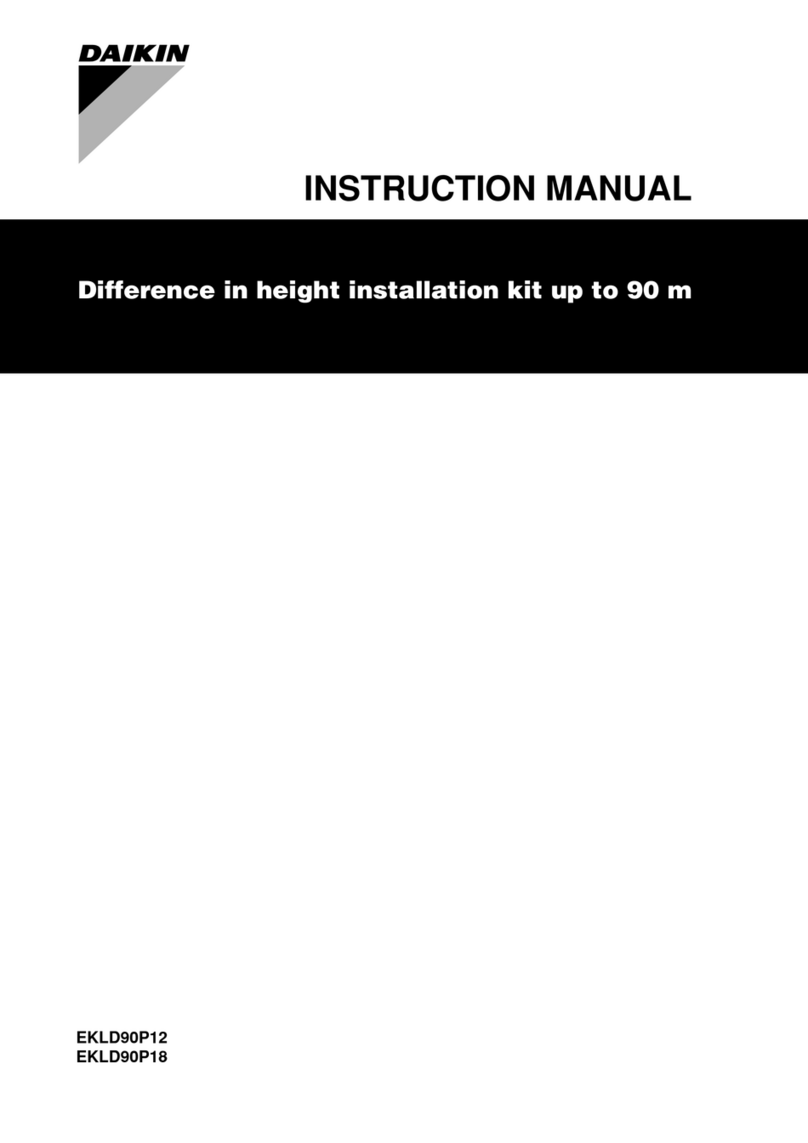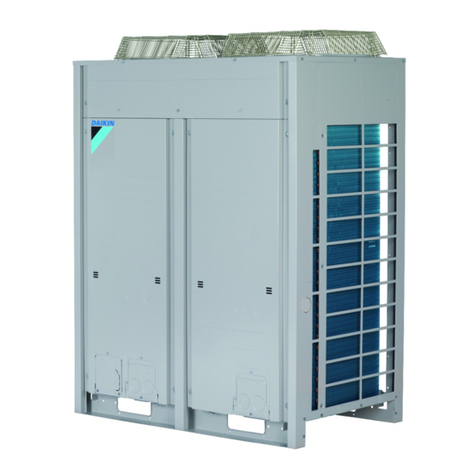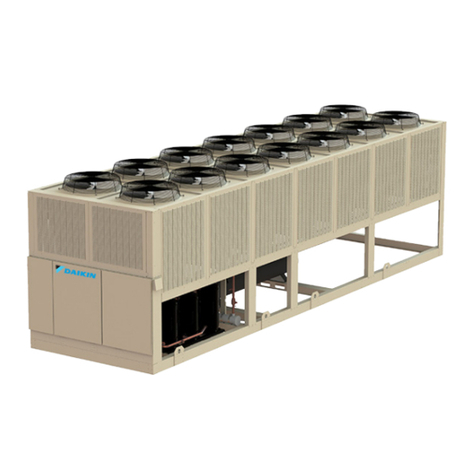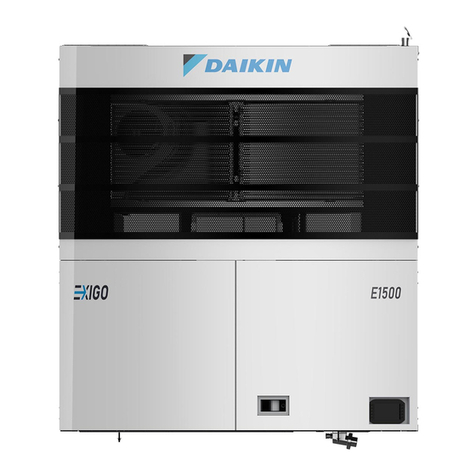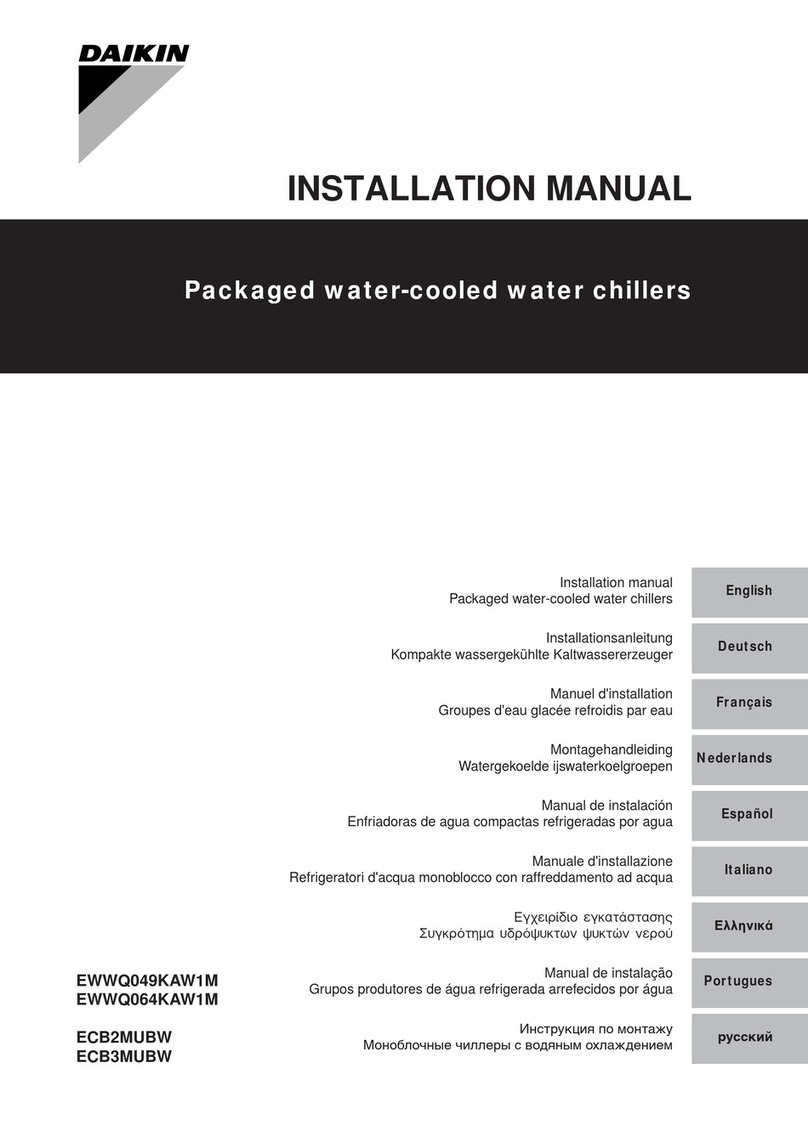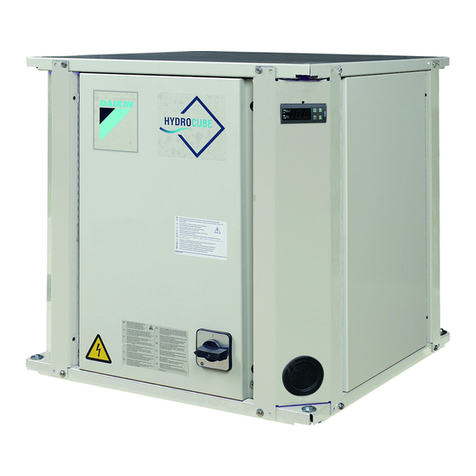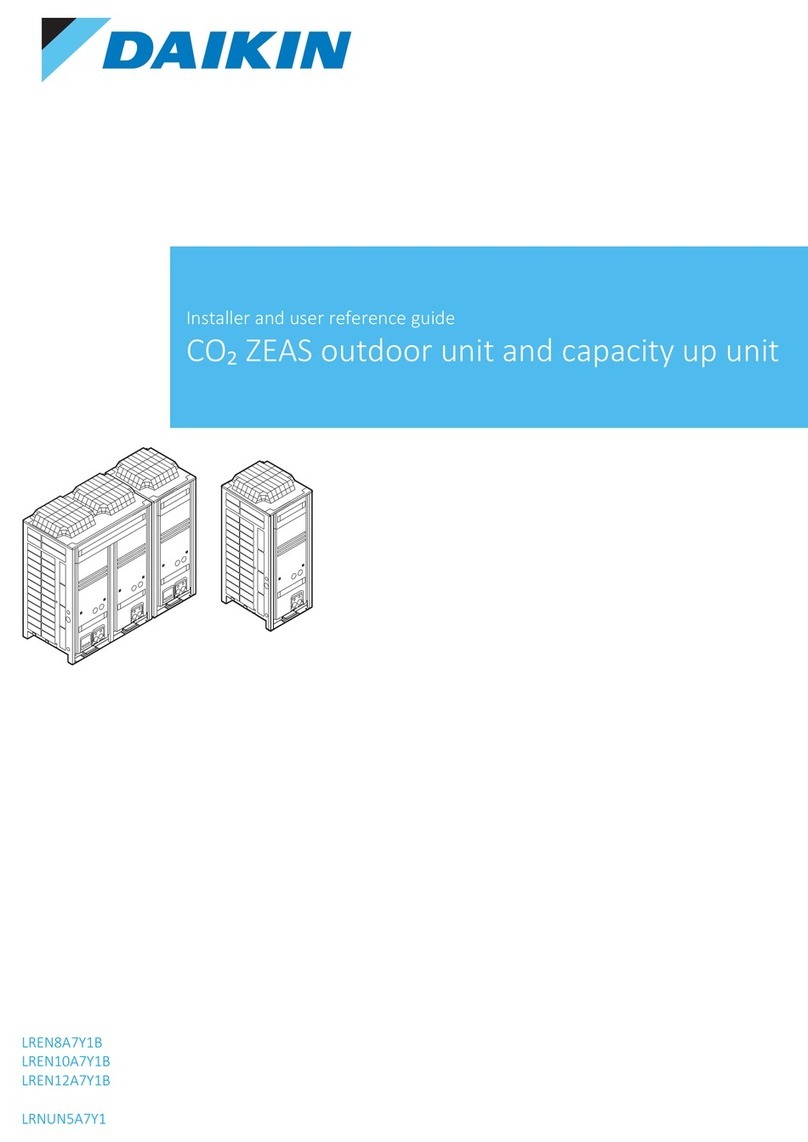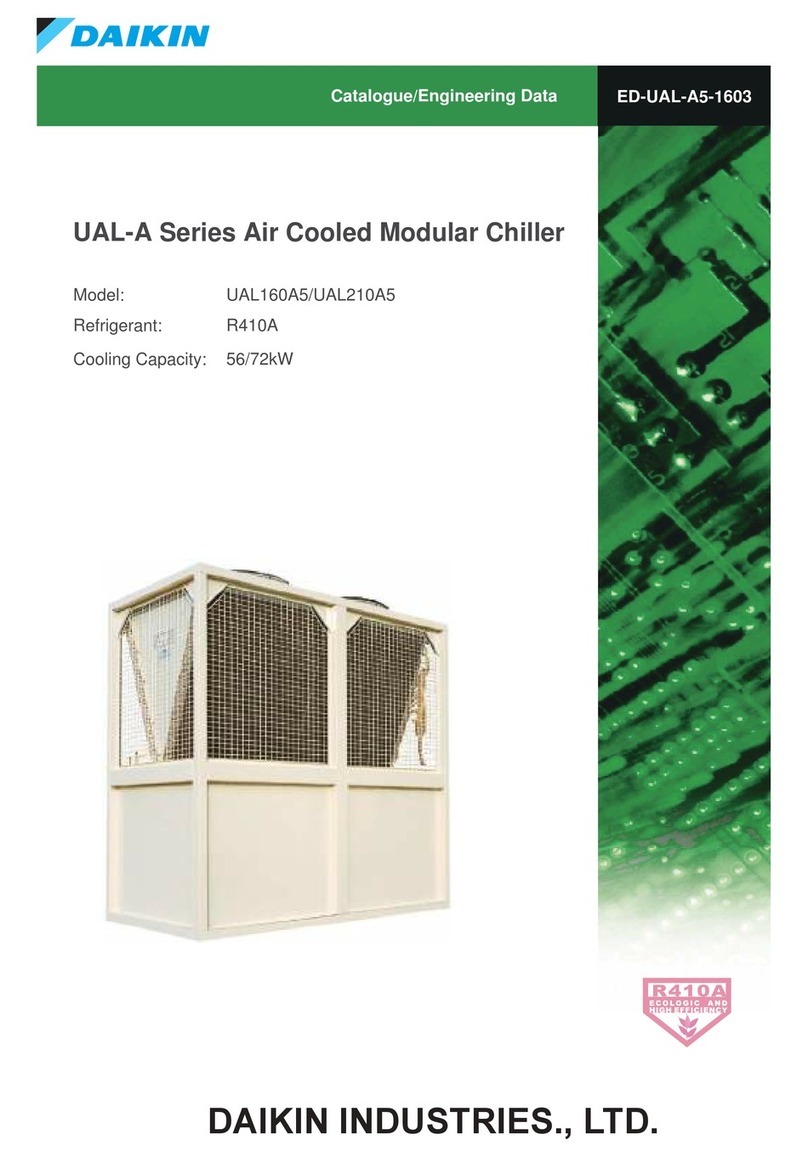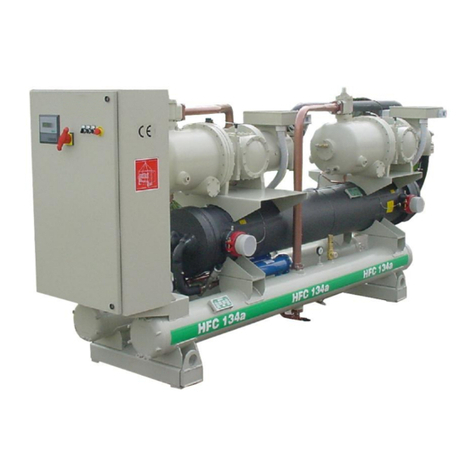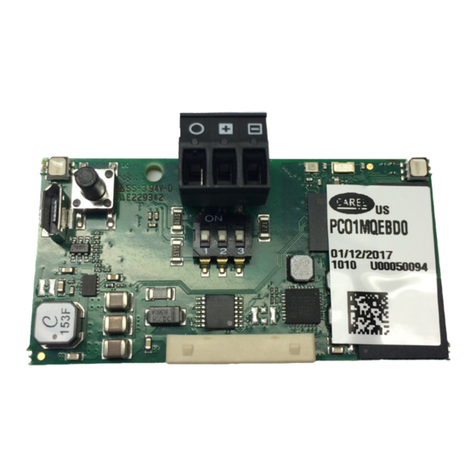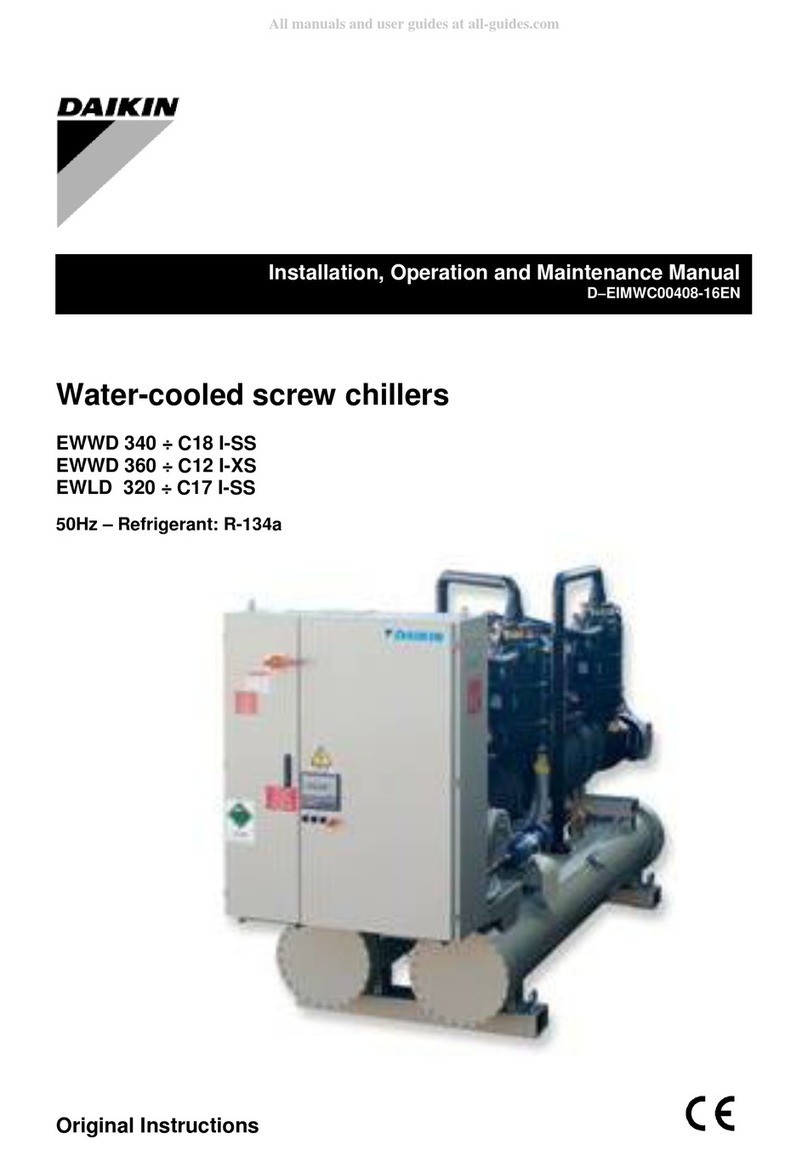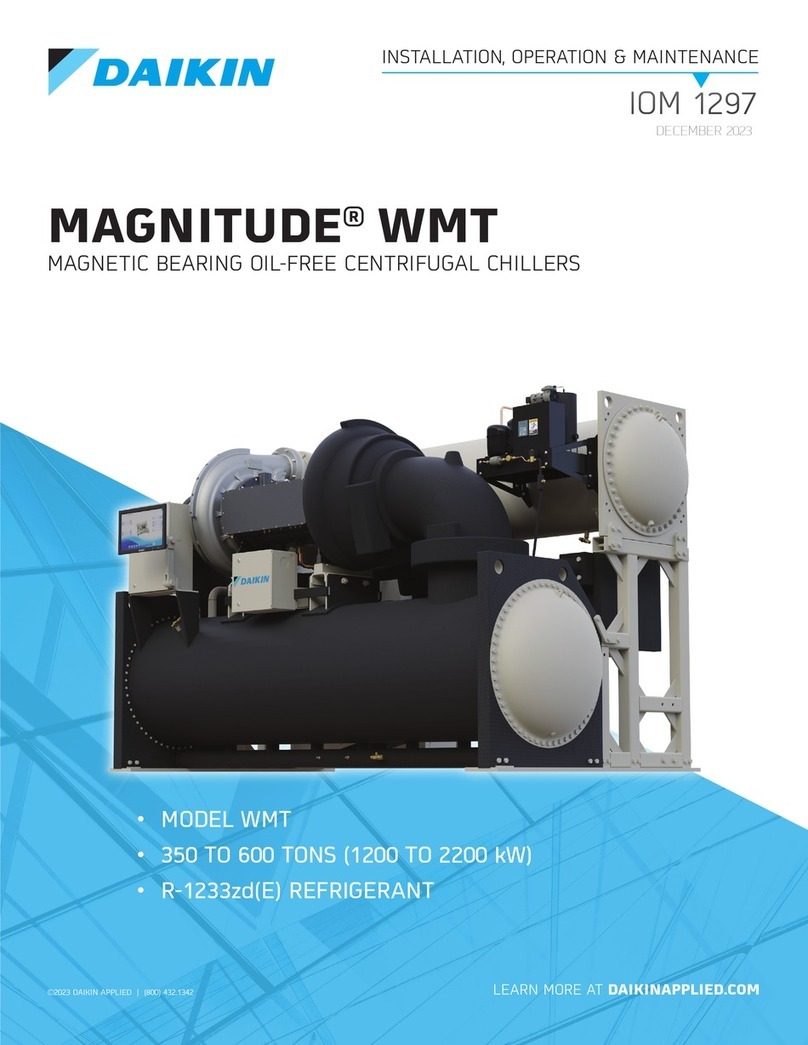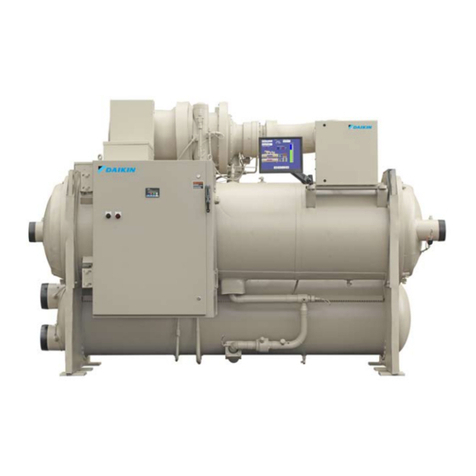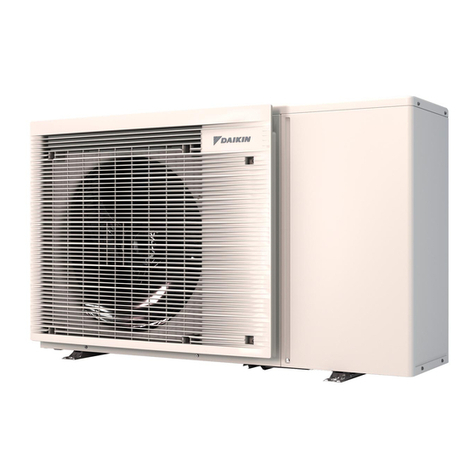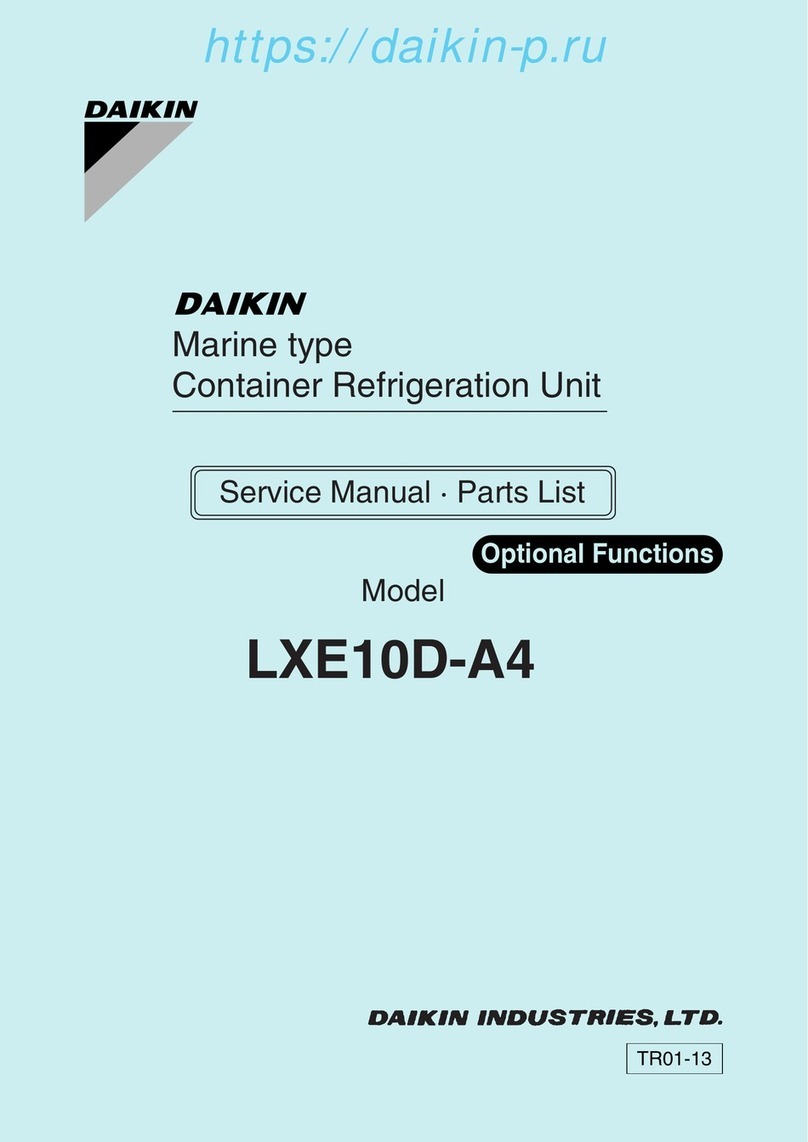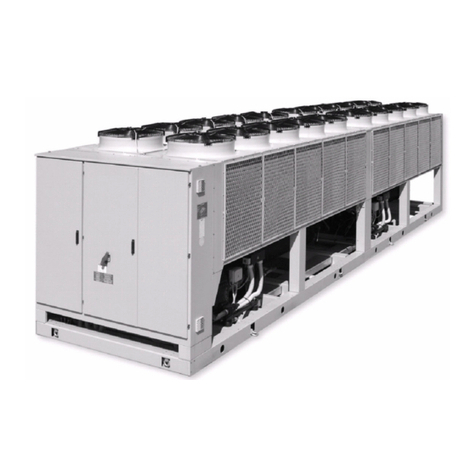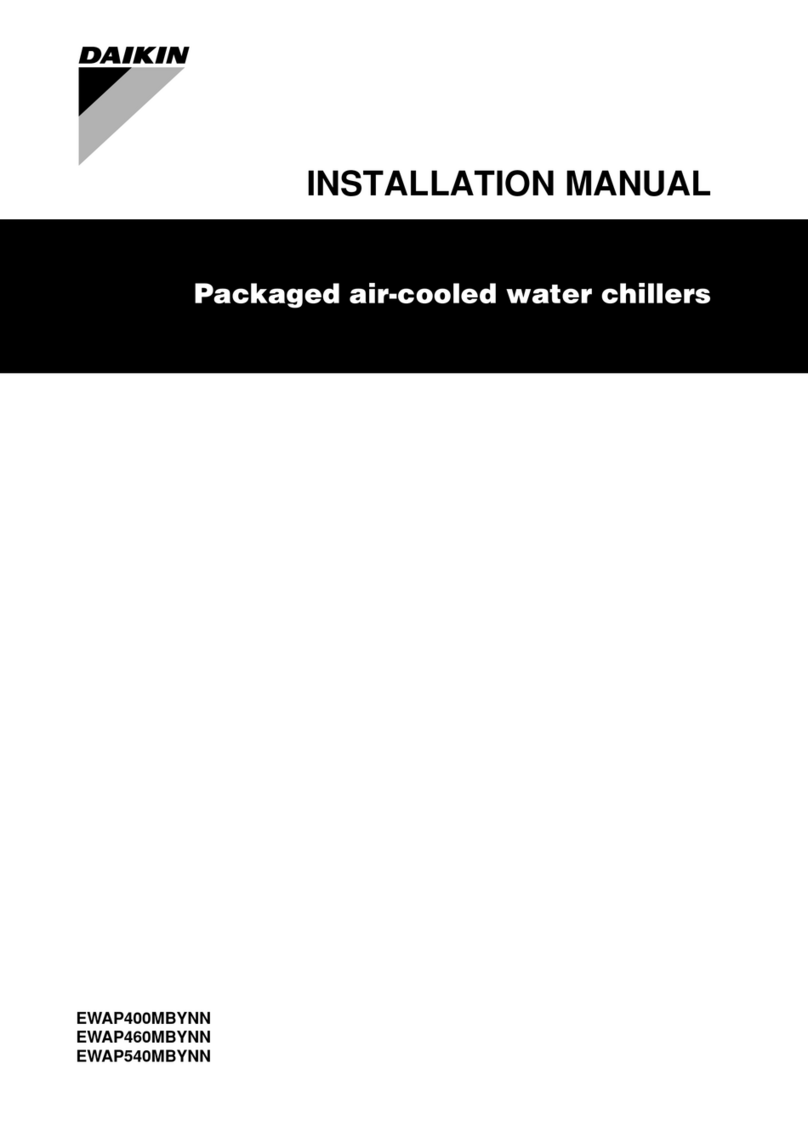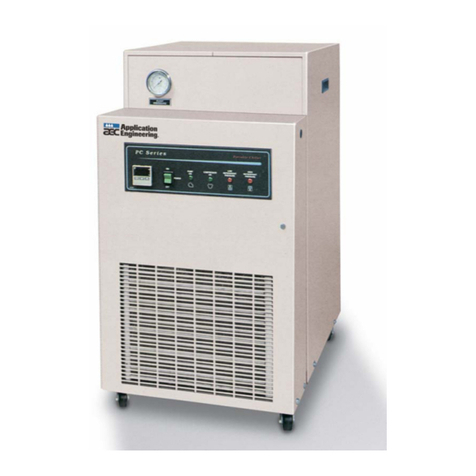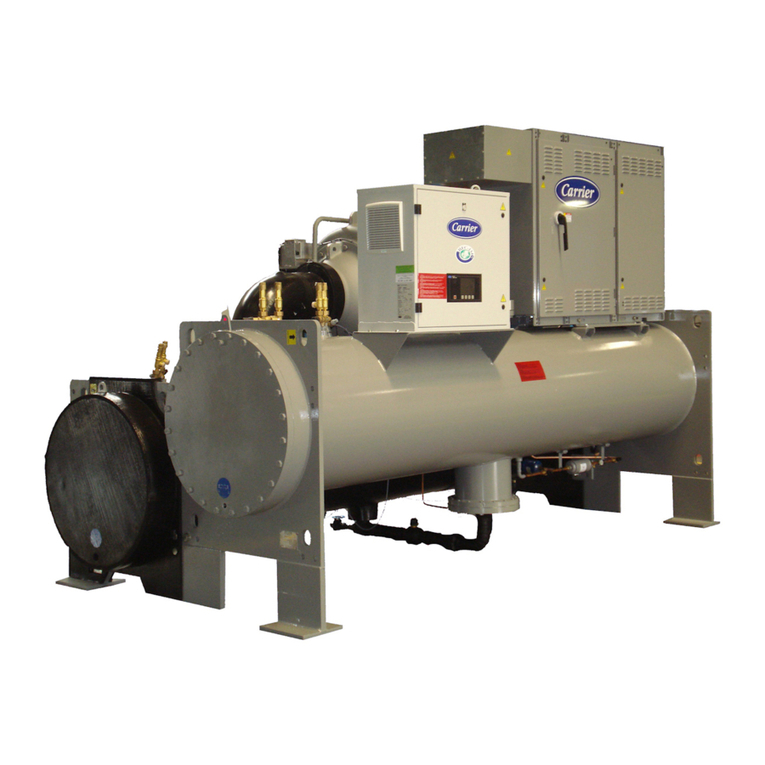
iom-clim-cf-engwww.clima-ex.com
9
Figure 6. Three or more units, side by side
Case 4. Open protection walls
Decorative walls are often used to help conceal a unit, either on
the ground or on the roof. Whenever possible, design these walls
so that the combination of their open area and distance to the unit
does not require a performance adjustment.
If the percentage of wall openness is less than recommended for
the distance to the unit, it should be considered a solid wall. The
wall height is assumed to be equal to or less than the height of the
unit when mounted on its base bracket.
If the wall height is greater than the unit height, refer to Case 5:
Pit Installation for performance adjustment factors. The distance
from the sides of the unit to the side walls must be sufficient for
service, such as opening the control panel doors.
In the case of uneven wall separation, the distance from the unit
to each wall can be averaged as long as no distance is less than
4 feet. Values are based on walls on all four sides.
Case 5. Pit installation
Pit installations can cause operating problems due to recirculation
and air restriction and require that sufficient air separation be
provided, safety requirements be met, and service access be
provided. A solid wall surrounding a unit is substantially a pit and
this datum should be used. Sometimes a steel grating is used to
cover a pit to prevent accidental falls or trips into the pit.
The grille material and installation design should be strong
enough to prevent such accidents, but should provide plenty of
open area to avoid recirculation problems.
Have the Clima Flex sales representative review the installation
of any pit prior to installation to ensure that it has sufficient airflow
characteristics and is approved by the facility design engineer to
avoid the risk of an accident.
Figure 7. Pit installation
! CAUTION !
To prevent damage to the evaporator and possible failure of
the chiller, a supply filter is required in the inlet water piping
that connects to this evaporator. This filter must be installed
prior to operation of the chilled liquid pumps.
Field-installed water piping for the chiller should include:
• A cleanable filter installed at the water inlet to the evaporator
to remove debris and impurities before they reach the
evaporator. Install the cleanable filter within 1,500 mm tubing
length from the evaporator inlet connection and downstream
of any solder connections (no solder connections between
the filter and evaporator). CLIM models 7.5 - 62.5 require
a filter with perforations no larger than 1.6 mm (0.063”) in
diameter. For more information, refer to the inlet strainer
guidelines on page 10-11.
• A water flow switch should be installed in the horizontal
piping of the supply water line (evaporator outlet) to prevent
evaporator freezing under low or no flow conditions. The flow
switch can be ordered as a factory installed option, as a field
installed kit, or can be supplied and installed in the field. See
page 12 for more information.
• Piping for units with brazed plate evaporators must have
a drain and vent connection at the bottom of the bottom
connection piping and at the top of the top connection piping,
respectively, see Figure 8.
• These evaporators do not have drain or vent connections due
to their construction. Purge air from the water system prior to
unit start-up to provide adequate flow through the evaporator.
• A suitable pipe support, separate from the unit, to eliminate
weight and stress on fittings and connections.
• An expansion tank and regulating valve to maintain water
pressure.
• Suitable mechanical connections. All evaporators have.
• OGS type grooved water connections (adhering to AWWA
C606) optionally with flanges. PVC piping should not be used.
! WARNING !
Polyolester oil, commonly known as POE oil, is a synthetic oil used in many refrigeration systems and is present in this Clima Flex
product. POE oil, if it ever comes in contact with PVC/CPVC, will coat the inside wall of the PVC/CPVC pipe causing environmental
stress fractures. Although there is no PVC/CPVC pipe in this product, keep this in mind when selecting piping materials for your
application as system failure and property damage could occur. Consult the pipe manufacturer’s recommendations to determine
suitable pipe applications.

